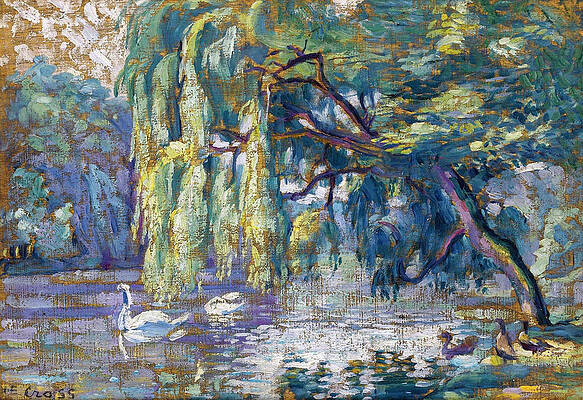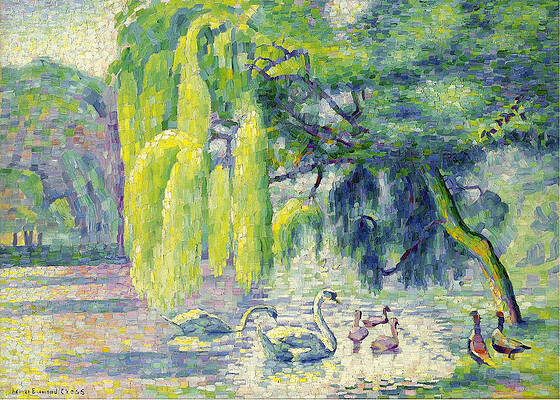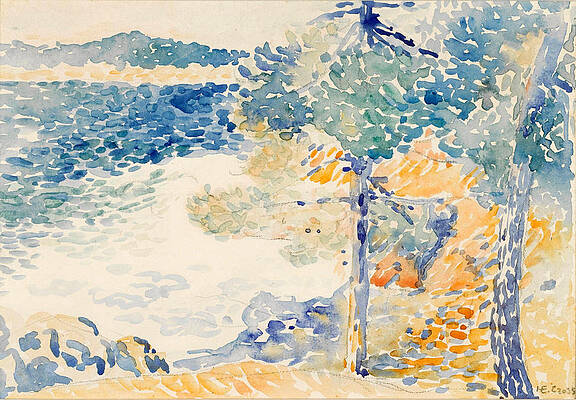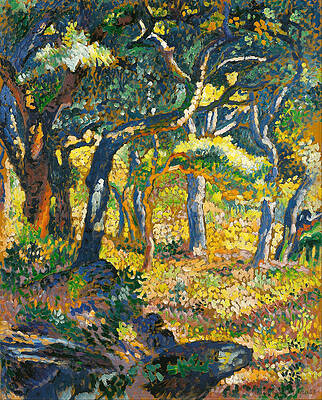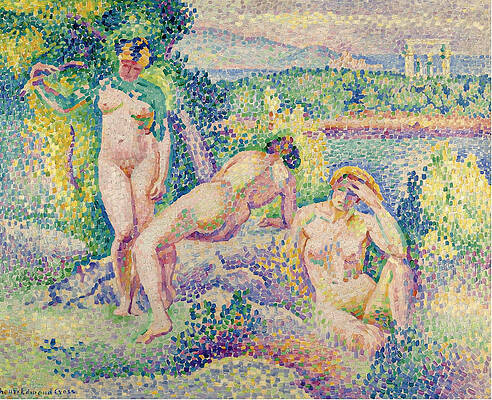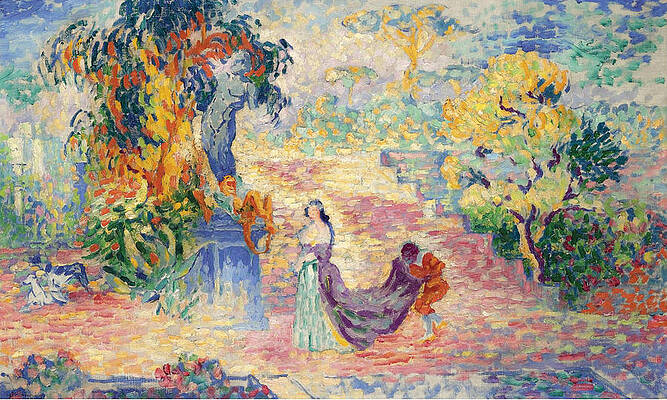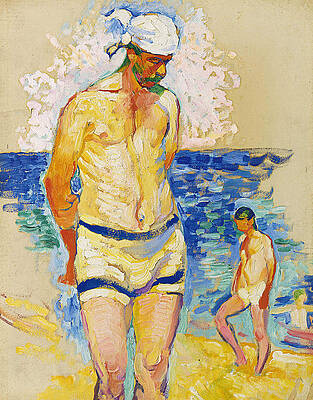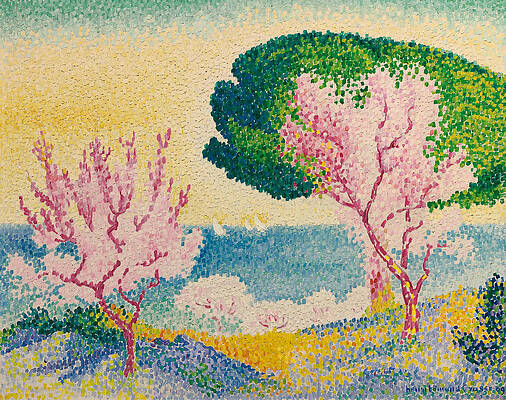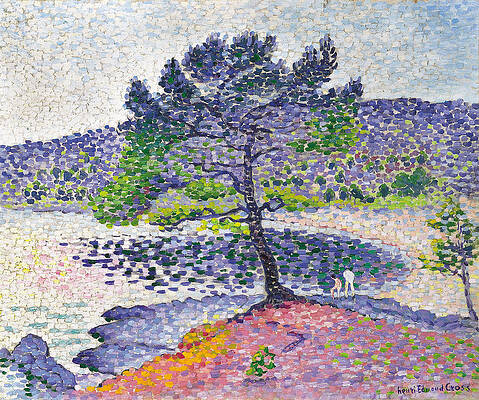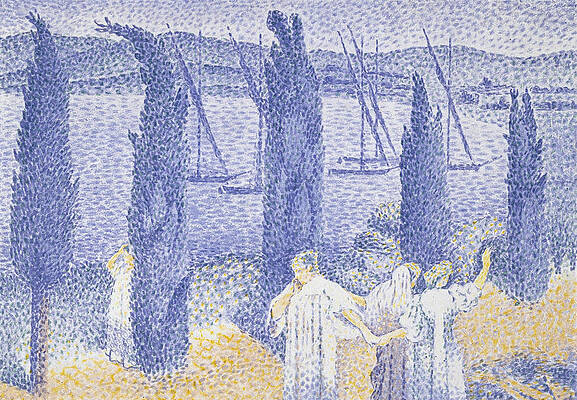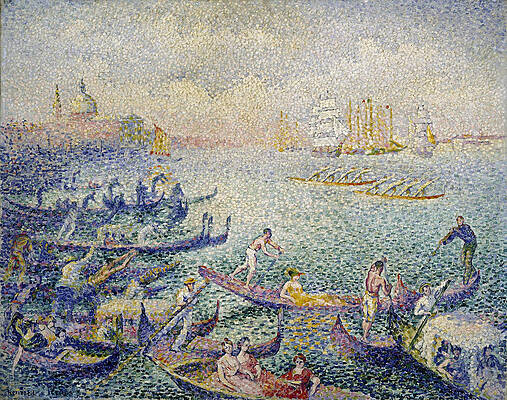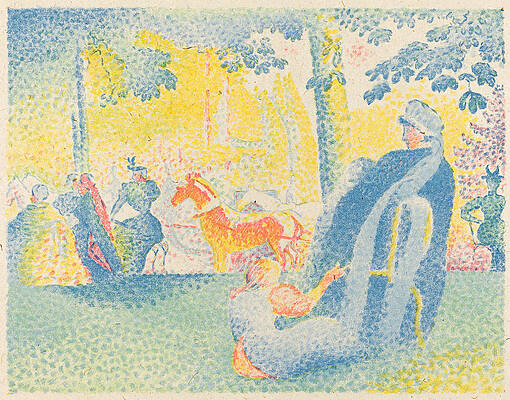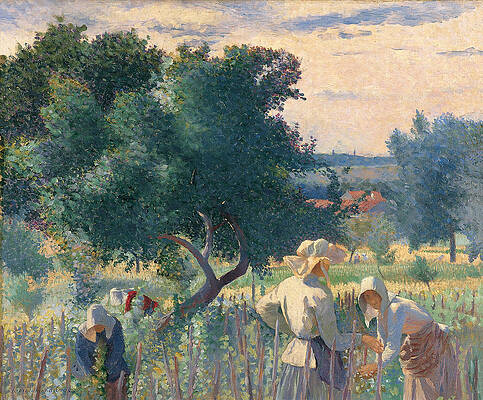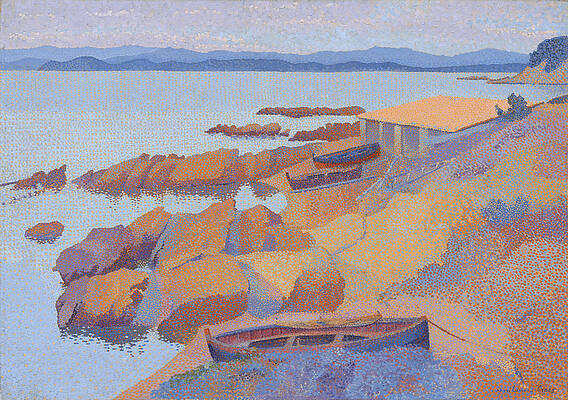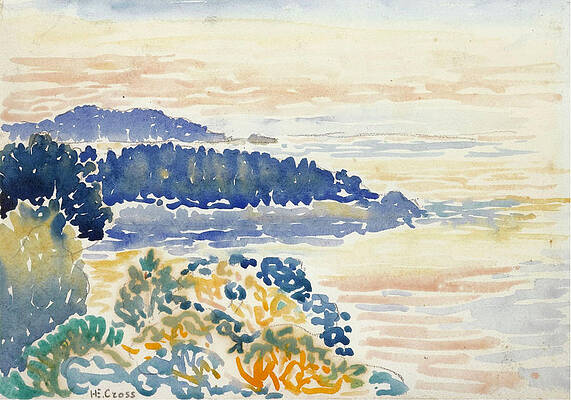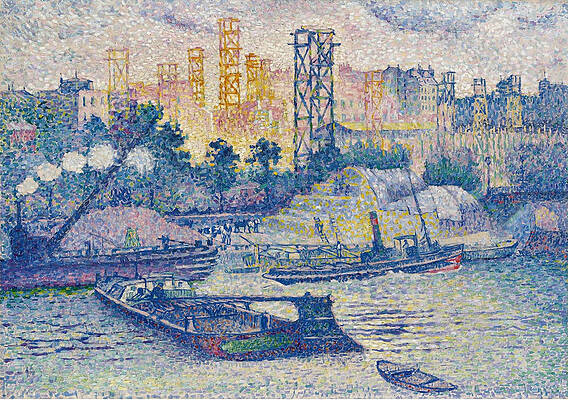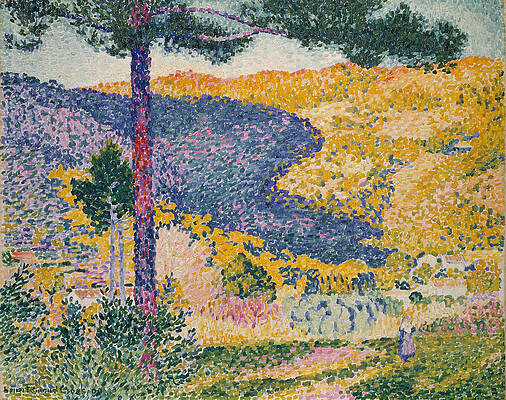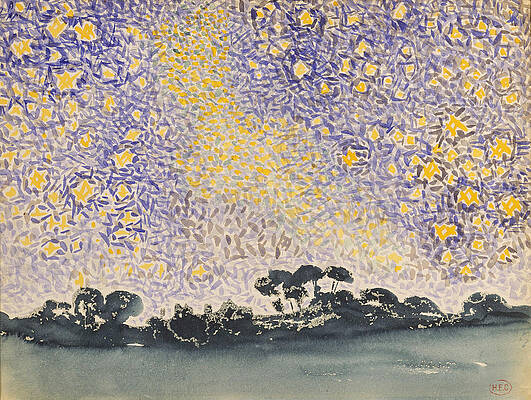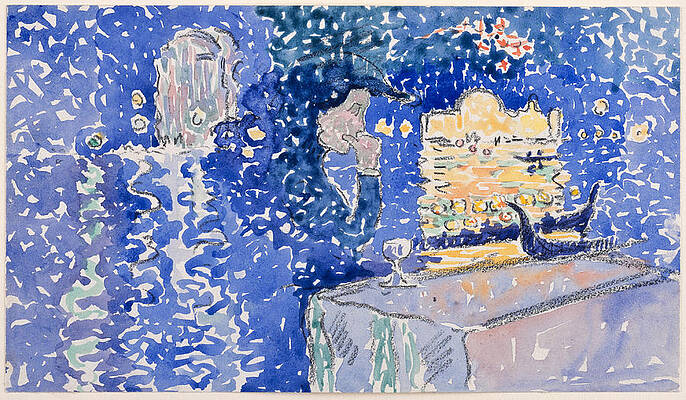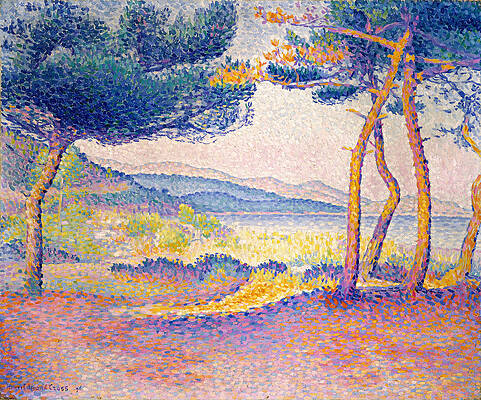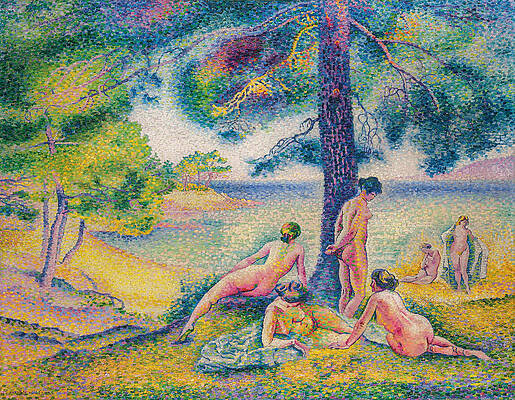Henri-Edmond Cross
Paintings
Swans Family . Forest of Boulogne
Swans Family
Landscape. Saint Clair
Clearing in Provence
The Nymphs
Lady at the Park
Study for Le Lesteur
Study for Tamaris, The Bather
Benting Tree
Printemps Rose
Beach Evening Effect
The Promenade
Regatta in Venice
Les Champs-Elysees
The Fruit of Nymphs
Women Tying the Vines
The Flowered Terrace
Coast near Antibes
Mediterranian Coast Seascape
Landscape with Mountain Range
The Quay of Passy
Valley with Fir. Shade on the Mountain
Landscape with Stars
Venice. Night of the Festival of the Redeemer
Pines Along the Shore
Before the Storm. The Bather
The Bay of Saint Clair
The Shaded Beach
Landscape






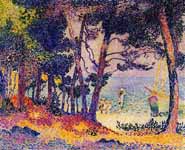










































The Iles d'Or (The Iles d'Hyeres, Var)
































Peasant Woman Stretched out on the Grass




Landscape, the Little Maresque Mountains

Les Petits, Montagnes Mauresques













View of the Church of Santa Maria degli Angeli, near Assisi






Venice, Palazzo Venier dei Leoni

Young Woman (Study for The Clearing)






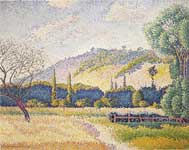
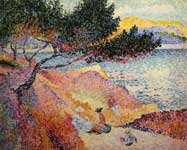
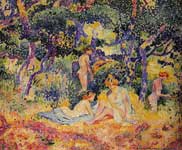
Henri-Edmond Cross, born Henri-Edmond-Joseph Delacroix, (20 May 1856 – 16 May 1910) was a French painter and printmaker. He is most acclaimed as a master of Neo-Impressionism, and he played an important role in shaping the second phase of that movement. He was very influential to Henri Matisse and many other artists, and his work was an instrumental influence in the development of Fauvism.
Background and education
Henri-Edmond-Joseph Delacroix was born in Douai,[1] a commune in the Nord département in northern France, on 20 May 1856. He had no surviving siblings. His parents, with a family history of ironmongery,[2] were French adventurer Alcide Delacroix and British Fanny Woollett.[3]
In 1865 the family moved near Lille, a northern French city close to the Belgian border. Alcide's cousin, Dr. Auguste Soins, recognized Henri's artistic talent and was very supportive of his artistic inclinations, even financing the boy's first drawing instructions under painter Carolus-Duran the following year.[4] Henri was Duran's protégé for a year.[2] His studies continued for a short time in Paris in 1875 with François Bonvin[4] before returning to Lille. He studied at the École des Beaux-Arts and in 1878, he enrolled at the Écoles Académiques de Dessin et d'Architecture, studying for three years in the studio of Alphonse Colas.[3][5] His art education continued, under fellow Douai artist Émile Dupont-Zipcy,[3] after moving to Paris in 1881.[6]
Early work
Madame Hector France, 1891, Musée d'Orsay
Cross's early works, portraits and still lifes, were in the dark colors of Realism.[7] In order to distinguish himself from the famous Romantic painter Eugène Delacroix, he changed his name in 1881, shortening and Anglicizing his birth name to "Henri Cross" – the French word croix means cross.[6] 1881 was also the year of his first exhibition at the Salon des Artistes Français.[5] He painted many landscapes on an 1883 trip to the Alpes-Maritimes, accompanied by his family. Dr. Soins, who was also along on the trip, was the subject of a painting which Cross exhibited at Nice's Exposition Universelle later in the year.[8] During the Mediterranean trip, Cross met Paul Signac,[6] who became a close friend and artistic influence.
In 1884, Cross co-founded the Société des Artistes Indépendants,[7] which consisted of artists displeased with the practices of the official Salon, and presented unjuried exhibitions without prizes.[9] There he met and became friends with many artists involved in the Neo-Impressionist movement, including Georges Seurat, Albert Dubois-Pillet, and Charles Angrand.[5] Despite his association with the Neo-Impressionists, Cross did not adopt their style for many years. His work continued to manifest influences such as Jules Bastien-Lepage and Édouard Manet, as well as the Impressionists.[5] The change from his early, somber, Realist work was gradual. His color palette became lighter and he worked en plein air, he painted in the brighter colors of Impressionism. In the latter part of the 1880s, he painted pure landscapes which showed the influence of Claude Monet and Camille Pissarro. In about 1886, attempting again to differentiate himself from another French artist – this time, Henri Cros – he again changed his name, finally adopting "Henri-Edmond Cross".[3]
The farm, evening, 1893, Private collection
In 1891, Cross began painting in the Neo-Impressionist style, and exhibited his first large piece using this technique in an Indépendants show.[3] That painting was a divisionist portrait of Madame Hector France, née Irma Clare,[10] whom Cross had met in 1888 and would marry in 1893.[4] Robert Rosenblum wrote that "the picture is softly charged with a granular, atmospheric glow".[10]
Cross had wintered in the south of France from 1883 onward,[11] until, suffering from rheumatism, he finally moved there full-time in 1891.[5] His works were still exhibited in Paris. His first residence in southern France was in Cabasson, near Le Lavandou,[3] then he settled a short distance away, in the small hamlet of Saint-Clair, where he spent the remainder of his life, leaving only for Italian trips in 1903 and 1908, and for his annual Indépendants exhibits in Paris.[5] In 1892, Cross's friend Paul Signac moved to nearby Saint-Tropez.[12] Cross and Signac frequently hosted gatherings in Cross's garden, attended by such luminaries as Matisse, André Derain, and Albert Marquet.[13]
L'air du soir, c.1893, Musée d'Orsay
Cross's affinity with the Neo-Impressionist movement extended beyond the painting style, to include their political philosophies. Like Signac, Pissarro, and other Neo-Impressionists, Cross believed in anarchist principles, with hope for a utopian society.[14] In 1896, Cross created a lithograph, L'Errant (The Wanderer). This marked the first time he had worked with a publisher,[15] and the piece was featured anonymously in Les Temps Nouveaux, Jean Grave's anarchist journal.[14] Cross's anarchist sentiments influenced his choice of subjects. He painted scenes illustrating a utopian world that could exist through anarchism.[1]
The process of creating Divisionist paintings with numerous small dots of color was tedious and time-consuming. When Cross wanted to depict quick impressions, he created watercolor or colored pencil images in his sketchbooks. He wrote of a rustic French outing:
"Oh! What I saw in a split second while riding my bike tonight! I just had to jot down these fleeting things ... a rapid notation in watercolor and pencil: an informal daubing of contrasting colors, tones, and hues, all packed with information to make a lovely watercolor the next day in the quiet leisure of the studio."[11]
Later years
La Plage de Saint-Clair, 1896
Cross's paintings of the early- to mid-1890s are characteristically Pointillist, with closely and regularly positioned tiny dots of color. Beginning around 1895, he gradually shifted his technique, instead using broad, blocky brushstrokes and leaving small areas of exposed bare canvas between the strokes.[1] The resulting surfaces of the paintings resembled mosaics,[13] and the works may be seen as precursors to Fauvism and Cubism.[7] Whereas in Pointillism, minute spots of paint were intended to blend colors harmoniously,[1] the "second generation Neo-Impressionism"[5] strategy was to keep the colors separate, resulting in "vibrant shimmering visual effects through contrast".[1] Cross stated that the Neo-Impressionists were "far more interested in creating harmonies of pure color, than in harmonizing the colors of a particular landscape or natural scene."[16] Henri Matisse and other artists were very influenced by the late-career Cross,[1] and such works were instrumental in forming the principles of Fauvism.[5] Among the other artists influenced by Cross were André Derain, Henri Manguin, Charles Camoin, Albert Marquet, Jean Puy, and Louis Valtat.[7]
Galerie Druet in Paris mounted Cross's first solo exhibition, in 1905, featuring thirty paintings and thirty watercolors.[17] The show was very successful, receiving critical acclaim, and most of the works were sold. Belgian Symbolist poet Emile Verhaeren, an avid supporter of Neo-Impressionism in his country, provided the preface for the exhibition catalog, writing:
"These landscapes ... are not merely pages of sheer beauty, but motifs embodying a lyrical sense of emotion. Their rich harmonies are satisfying to the painter’s eye, and their sumptuous, luxuriant vision is a poet's delight. Yet this abundance never tips into excess. Everything is light and charming ..."[18]
Cross began to experience troubles with his eyes in the early 1880s, and these grew more severe in the 1900s. He also increasingly suffered from arthritis. At least in part due to these health issues which plagued him for years, Cross's body of work is relatively small.[14] However, in his last years he was productive and very creative,[18] and his work was featured in significant solo exhibitions; he received great acclaim from critics and enjoyed commercial success.[14]
In 1909, Cross was treated in a Paris hospital for cancer. In January 1910 he returned to Saint-Clair, where he died of the cancer just four days short of his 54th birthday, on 16 May 1910.[4] His tomb, in the Le Lavandou cemetery, features a bronze medallion which his friend Théo van Rysselberghe had designed.[18] In July 1911, the city of Cross's birth, Douai, mounted a retrospective exhibition of his work.[18]
Selected exhibitions
Regatta in Venice, 1898/1908
In addition to the exhibitions mentioned above, Cross participated in many others. Octave Maus invited him to exhibit his work in several of the Annual Exhibitions of Les XX.[6] Cross participated in the Libre Esthétique show of 1895 at Maus's invitation, and also in those of 1897, 1901, 1904, 1908, and 1909. In 1898 he participated with Paul Signac, Maximilien Luce, and Théo van Rysselberghe in the first Neo-Impressionist exhibition in Germany, organized by Harry Kessler at Keller und Reiner Gallery (Berlin).[19] In 1907, Félix Fénéon assembled a Cross retrospective in Paris at Galerie Bernheim-Jeune, with Maurice Denis contributing the catalogue preface.[17] Other venues with Cross exhibitions included Samuel Bing's L'Art Nouveau à Paris, Galerie Durand-Ruel (Paris), Cassirer Gallery (Hamburg, Berlin), Toison d'or exhibition (Moscow), Bernheim-Jeune's Aquarelle et pastel, and various others, including galleries in Paris, Dresden, Weimar, and Munich.[20]
Collections
Allen Memorial Art Museum (Oberlin College, Ohio)
Art Institute of Chicago
Barnes Foundation (Philadelphia, Pennsylvania)
Block Museum of Art (Northwestern University, Evanston, Illinois)
Brooklyn Museum (New York City)
Cleveland Museum of Art
Fine Arts Museums of San Francisco
Finnish National Gallery (Helsinki, Finland)
Harvard University Art Museums
Hermitage Museum (Saint Petersburg, Russia)
Honolulu Museum of Art
Indianapolis Museum of Art
Kröller-Müller Museum
Kunstmuseum Basel (Switzerland)
Los Angeles County Museum of Art
Metropolitan Museum of Art (New York City)
Museum of Grenoble (Grenoble, France)
Musée d'Orsay (Paris)
Musée Malraux (Le Havre, France)
Musée Richard Anacréon (Granville, France)
Museum of Modern Art (New York City)
National Gallery of Art (Washington D.C.)
New Art Gallery (Walsall, England)
Statens Museum for Kunst (National Gallery of Denmark, Copenhagen)
Tel Aviv Museum of Art
Thyssen-Bornemisza Museum (Madrid)
Wallraf-Richartz-Museum (Cologne, Germany)
References
Wieseman, M. E. "Cross: Fisherman". Allen Memorial Art Museum, Oberlin College. Retrieved 14 February 2012.
Taddei, p. 13.
Turner, p. 124.
"Henri Cross and the Neo-Impressionists". Paris Art Studies. 2008. Retrieved 14 February 2012.
López-Manzanares, Juan. Á. (2009). "Biography and Works: Henri-Edmond Cross". Thyssen-Bornemisza Museum. Retrieved 14 February 2012.
Clement, p. 291.
Clement, p. 289.
Taddei, p. 14.
Taddei, p. 8.
Rosenblum, Robert (1989). Paintings in the Musée d'Orsay. New York: Stewart, Tabori & Chang. p. 442. ISBN 1-55670-099-7.
"Introduction: Henri-Edmond Cross, Sketchbook, 1897". Harvard Art Museums. Retrieved 14 February 2012.
Taddei, p. 6.
"Henri-Edmond Cross: The Artist's Garden at Saint-Clair (48.10.7)". Heilbrunn Timeline of Art History. Metropolitan Museum of Art. 2000. Retrieved 14 February 2012.
Turner, p. 125.
Taddei, p. 16.
Taddei, p. 17.
Clement, p. 293.
Taddei, p. 18.
Clement, p. 292.
Clement, pp. 292–3.
Sources
Clement, Russell T.; Houzé, Annick (1999). Neo-impressionist Painters: A Sourcebook on Georges Seurat, Camille Pissarro, Paul Signac, Théo Van Rysselberghe, Henri Edmond Cross, Charles Angrand, Maximilien Luce, and Albert Dubois-Pillet. Westport, Conn.: Greenwood Press. ISBN 0-313-30382-7.
Taddei, Jacques; Maingon, Claire; Baligand, Françoise; Szymusiak, Dominique (September 2011). "Henri Edmond Cross and Neo-Impressionism: From Seurat to Matisse". Musée Marmottan Monet. Retrieved 14 February 2012.
Turner, Jane; Ward, Martha (2000). The Grove Dictionary of Art: From Monet to Cézanne: Late 19th-Century French Artists. New York, NY: St. Martin's Press. ISBN 0-312-22971-2. Retrieved 14 February 2012.
Further reading
Baligand, Françoise (1998). Henri Edmond Cross: 1856–1910. Paris: Somogy. ISBN 978-2-85056-331-7.
Baligand, Françoise, Raphaël Dupouy, and Claire Maingon, Henri-Edmond Cross: Etudes et oeuvres sur papier, Le Lavandou, Lalan, 2006.
Los Angeles County Museum (1953). Watercolors by Paul Signac: with two of his paintings and works by Georges Seurat and Henri Edmond Cross: December 4 – January 17, 1954, Los Angeles County Museum. Los Angeles. OCLC 145967784.
----
Fine Art Prints | Greeting Cards | Phone Cases | Lifestyle | Face Masks | Men's , Women' Apparel | Home Decor | jigsaw puzzles | Notebooks | Tapestries | ...
----
Artist
A - B - C - D - E - F - G - H - I - J - K - L - M -
N - O - P - Q - R - S - T - U - V - W - X - Y - Z
Retrieved from "http://en.wikipedia.org/"
All text is available under the terms of the GNU Free Documentation License


